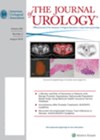
Journal Reviews archive for 2020
What should we do with the incidentally detected renal cyst in a child?
The introduction of routine prenatal screening in the early 1980s resulted in paediatric urologists being confronted with the dilemma of what to do with antenatally-detected urinary tract dilatation, many of whom, we now know, do not require long-term surveillance or...
Guideline of guidelines – testosterone therapy for testosterone deficiency
The authors conducted an internet search and analysed guidelines for testosterone therapy (TTh) produced by the American Urological Association (AUA), European Association of Urology (EAU), American Association of Clinical Endocrinologists (AACE), British Society of Sexual Medicine (BSSM), Endocrine Society (ES),...
Non-urothelial tumours of bladder – impact on oncological outcomes
Non-urothelial bladder tumours are not very common and they are generally considered to be high risk tumours when compared to standard urothelial tumours. In this study the researchers analysed the oncological outcomes of patients with such histology in comparison to...
Supranormal function on MAG-3 – what is its significance and how to predict?
Differential renal function (DRF) on MAG-3 scans is typically used in patients with pelvic ureteric junction obstruction (PUJ obstruction). Supranormal DRF is when the kidney with PUJO has higher DRF than the normal contralateral kidney. The authors in this study...
Prostate cancer and an electronic nose
So far the transrectal ultrasound guided (TRUS) biopsy has been the ‘gold standard’ for diagnosing prostate cancer. However, it is invasive and can lead to complications, so there is a need for new non-invasive diagnostic tools to avoid unnecessary biopsy...







